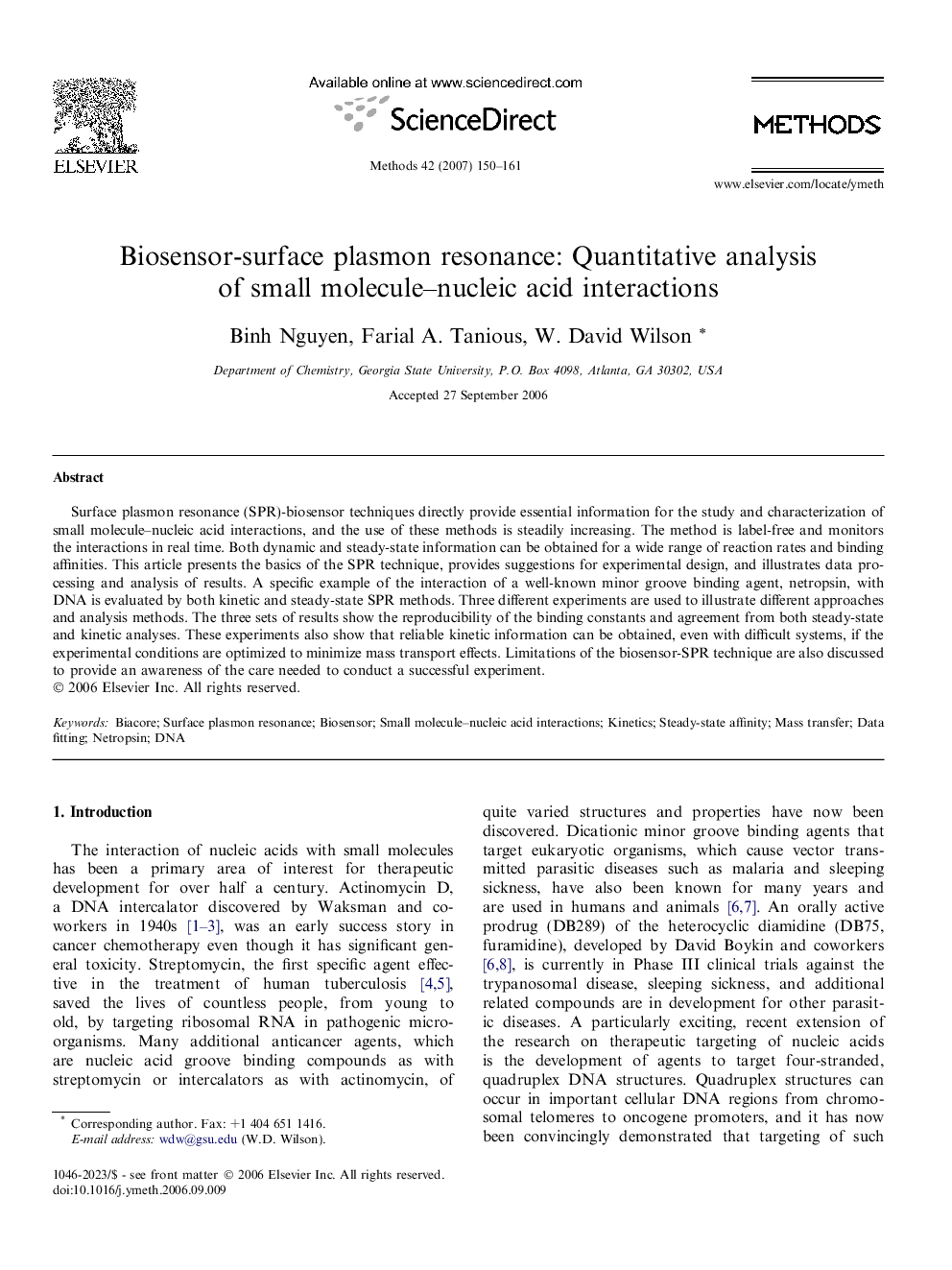| Article ID | Journal | Published Year | Pages | File Type |
|---|---|---|---|---|
| 1994570 | Methods | 2007 | 12 Pages |
Surface plasmon resonance (SPR)-biosensor techniques directly provide essential information for the study and characterization of small molecule–nucleic acid interactions, and the use of these methods is steadily increasing. The method is label-free and monitors the interactions in real time. Both dynamic and steady-state information can be obtained for a wide range of reaction rates and binding affinities. This article presents the basics of the SPR technique, provides suggestions for experimental design, and illustrates data processing and analysis of results. A specific example of the interaction of a well-known minor groove binding agent, netropsin, with DNA is evaluated by both kinetic and steady-state SPR methods. Three different experiments are used to illustrate different approaches and analysis methods. The three sets of results show the reproducibility of the binding constants and agreement from both steady-state and kinetic analyses. These experiments also show that reliable kinetic information can be obtained, even with difficult systems, if the experimental conditions are optimized to minimize mass transport effects. Limitations of the biosensor-SPR technique are also discussed to provide an awareness of the care needed to conduct a successful experiment.
